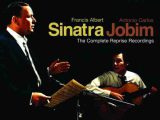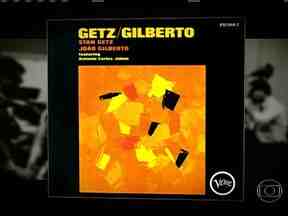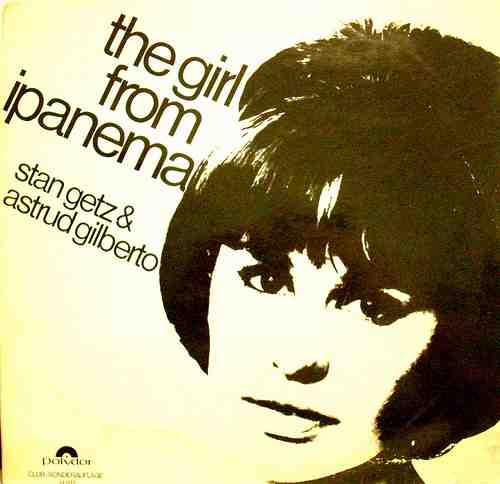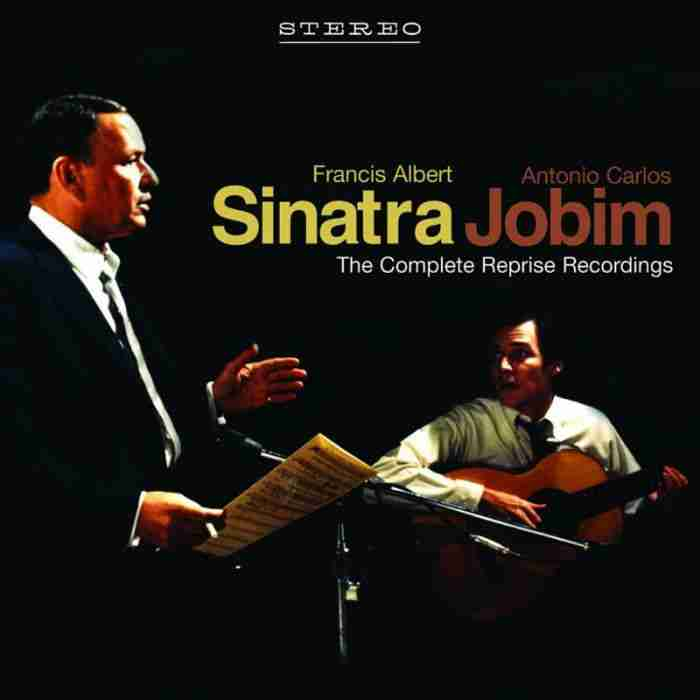Este post também está disponível em:
Português
English

The bossa nova, which had been drawing itself up since 1962 and was finally consolidated with the Getz/Gilberto album – Stan Getz & João Gilberto featuring Antonio Carlos Jobim.
I don’t remember seeing anything significant in the Brazilian media about the 50th anniversary of the release of the album that went down in history as one of the main emissaries of Bossa Nova in the United States.
Gathered under the baton of producer Creed Taylor, saxophonist Stan Getz received none other than João Gilberto, his wife Astrud and Tom Jobim, for the recordings of this true gem: Stan Getz / João Gilberto. It’s just under thirty-four minutes of endless hugging and caressing in terms of music.
This record, although superb and having already received several “desert island album” certificates, was not responsible for the arrival of the sunny Brazilian rhythm in Yankee lands, but its confirmation as a true craze among Jazz aficionados. Even so, it belongs to the category of eternal masterpieces, without any shadow of exaggeration.
In fact, Bossa Nova had already arrived there a few years before 1964. It is said that the first signs of the rhythm on American soil came with the success of the French film Orfeu da Conceição, based on the play written by Vinícius de Moraes, which featured compositions by him and Tom Jobim on its soundtrack, still in 1960.
Videos about the Album that took bossa nova to the world 50 years ago, Astrud Gilberto & Stan Getz in “The Girl From Ipanema” from 1964 and Frank Sinatra “The Girl From Ipanema”.


Primeiro Album da Bossa Nova04:15

Astrud Gilberto & Stan Getz em "The Girl From Ipanema"03:01

Frank Sinatra e Tom Jobim - The Girl from Ipanema
That same year, João Gilberto released his second album, O Amor, O Sorriso e a Flor, following up the masterful debut Chega de Saudade, released a year earlier.
João Gilberto was simply polishing the cornerstones of the style, with Tom Jobim’s participation in the arrangements.
The third and final part of this trilogy would come in 1961, with the album of the same name. In this context, American musicians came to Brazil at the same time for concerts and were duly introduced to Bossa Nova.
People like Ella Fitzgerald and flautist Herbie Mann realized that there was a tropical cousin of Jazz, something new, refreshing and absolutely capable of being appreciated in America.
In 1962, Washington DC disc jockey Felix Grant came to Rio and returned stocked with Bossa Nova LPs, which he included on his radio show without further ado. As Felix’s program had great penetration among musicians and jazz lovers, Bossa Nova would soon be the order of the day.
Jazz was facing a crisis. It was a rhythm essentially related to youth and the latter had fallen in love with rock. Simpler, more direct, with lyrics, attitude and speech packaged, the new rhythm had won out over jazz improvisations and sound metaphors.
Bossa Nova emerged as a possibility for the renewal of Jazz and its popularization, something that had become almost impossible in those days.
The first major album by an American musician to use the language of the new style was Jazz Samba, released by saxophonist Stan Getz and guitarist Charlie Byrd. Of the seven songs on the album, two are by Tom (Desafinado, Samba de Uma Nota Só), two by Ary Barroso (Bahia and É Luxo Só), as well as a partnership between Billy Blanco and Baden Powell (Samba Triste) and the total classic O Pato, by Jayme Silva and Neuza Teixeira.
Charlie Byrd signed Samba Dees Days as the only non-Brazilian song on the album. The success was resounding and the news reached Brazilian musicians, who decided to see what was happening there.
The new musical wave also caught the attention of American businessmen and soon a concert was organized at Carnegie Hall in New York, with artists minimally related to the style. In addition to them were the fathers of the subject, Tom, João, Carlos Lyra, Newton Mendonça, Luis Bonfá, Sérgio Mendes, Roberto Menescal and Agostinho dos Santos, famous for his participation in the soundtrack of Orfeu da Conceição, singing Manhã de Carnaval, the song that opened the movie. The show failed but served to consolidate Bossa Nova as a pop phenomenon, being known there as “New Beat”.
Soon the rhythm was understood and sold as something very modern, also associated with the image of the couple Jackie and John Kennedy, in an ingenious mechanism of political / social / cultural renewal.
New records of interpretations of songs by Brazilian artists continued to appear, until Tom Jobim himself, annoyed by the English versions of the lyrics, realized that no musician from here had signed a solo album there.
Soon the essential The Composer Of Desafinado Plays appeared, only with beautiful, light, airy and beachy instrumentals, something absolutely better and more appropriate than the gringa versions for the Bossa songs, with João Gilberto’s guitar, something that made a total difference. Recognition came in the form of the Grammy for best album of 1963 and opened the door to this fifty-year-old record we are writing about.
In 1964, Astrud Gilberto & Stan Getz emerged like thunder on the charts, despite their clean, quiet sound. The alternative to hermetic, intricate jazz came in the form of beautiful, light music of undeniable artistic value.
This, by the way, was the great fact that enchanted American audiences and musicians: Bossa Nova was something undeniably “easy”, melodic, but it was also virtuosic and “artistic” enough to bear the revolutionary and libertarian aura that Jazz had always carried forward.
Even though several imitators and caronists emerged between 1961 and 1964, the partnership between Stan Getz and João Gilberto, shielded by Tom Jobim and Astrud Gilberto, remains unaffected by the action of time.
The album would go on to win the Grammy for Best Album the following year, as well as awards for Best Jazz Album, Best Sound Engineering and the English-language version of Garota de Ipanema would be awarded Recording of the Year.
It wasn’t until 2008 that another jazz album would win the Grammy for Best of the Year, in this case River, The Joni Letters by Herbie Hancock. Vibe and Rolling Stone magazines included the album among the 500 most important of the 20th century.
Few know that the duo released another album in 1966, Getz/Gilberto #2, featuring a compilation of live recordings at Carnegie Hall made in 1964, with a side for each style, with Bossa Nova taking the B side, with English versions of standards such as O Pato, Corcovado, Você e Eu and the indefectible Garota de Ipanema.
The partnership between the two would also bear fruit in 1976, with the release of The Best Of Both Worlds, along the same lines of collaborative work, English lyrics and totally jazzy instrumentals.
The 1964 album, however, remains intact. It has been given a special 50th anniversary edition, with stereo and mono versions of the pristine recordings. It is a must-have for any serious music lover.
When bossa nova conquered the world – History of Bossa Nova
Bahia, Salvador and Northeast Tourism Guide



















